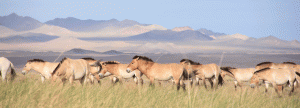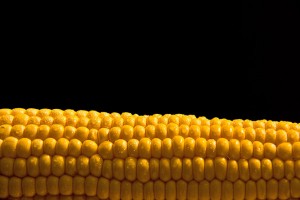Enter your address to receive notifications about new posts to your email.
Articles tagged Agriculture
(21 results)
-
Lineage specific retrotransposons shaped the genome evolution of domesticated rice
Rice is one of the most important food crops on earth. Like many other plants, the genome of this critical global species is dominated by transposable elements—selfish genes that multiply themselves to the detriment of their host. In the June issue of G3, Zhang and Gao analyze the genomic long terminal repeat (LTR) retrotransposon content…
-
MPP People: Geoffrey Morris
Multiparental populations (MPPs) have brought a new era in mapping complex traits, as well as new analytical challenges. To face these challenges and encourage innovation, the GSA journals launched the ongoing Multiparental Populations series in 2014. This month’s issues of GENETICS and G3 feature a bumper 16 MPP articles, timed to celebrate a new easy-to-use…
-
The Genetic History of Horses
Like any revolutionary technology, domestic horses changed human society. The incredible speed and strength of these animals opened up new opportunities to spread trade, language, and culture. For thousands of years, horses have been helping build human society by pulling wagons and plows and carrying soldiers and travelers on their backs. Horse husbandry changed humanity,…
-
Policy Points: Flat funding for NSF; Update on shared resources
The House Appropriations Committee completed a review of its fiscal year (FY) 2017 Commerce, Justice, Science, and Related Activities (CJS) spending bill, which provides the budget for the National Science Foundation (NSF). This bill includes language that supports the peer review process carried out by NSF in its funding process. The committee also refrained from any mention…
-
Behind the Podium: Pamela Ronald
In preparation for The Allied Genetics Conference (TAGC), set to take place in Orlando this July, Genes to Genomes is getting the inside scoop from many of the outstanding keynote speakers in our “Behind the Podium” series. Here, GSA member Tiffany Timbers interviews Prof. Pamela Ronald, a professor in the Genome Center and the Department…
-
Wine yeast genomes lack diversity
Sequencing the genomes of hundreds of strains of the wine yeast S. cerevisiae has revealed little genetic diversity and high levels of inbreeding. In many cases, yeast strains sold by different companies were almost genetically identical. The results, published in the April issue of G3: Genes|Genomes|Genetics, suggest that winemakers attempting to develop improved wine yeasts…
-
Funding Opportunity: USDA Research and Extension Experiential Learning for Undergraduates
The U.S. Department of Agriculture’s National Institute of Food and Agriculture is seeking applications for its Research and Extension Experiential Learning for Undergraduates (REEU) program offered through the Agriculture and Food Research Initiative (AFRI) and its Education and Literacy Initiative. The program seeks to “promote research and extension experiential learning for undergraduates such that upon…
-
Funding Opportunity: USDA predoc/postdoc fellowships
The U.S. Department of Agriculture’s National Institute of Food and Agriculture (NIFA) is seeking applications for predoctoral and postdoctoral fellowships offered through the Agriculture and Food Research Initiative (AFRI) and its Education and Literacy Initiative. The fellowships will support training and students and postdocs relevant to AFRI’s six identified challenge areas: childhood obesity prevention, climate change,…
-
Biotechnology Regulations to be Updated
The federal regulatory policy in use today for biotechnology products, known as the Coordinated Framework for the Regulation of Biotechnology, was created in 1986 through a joint effort between the U.S. Department of Agriculture (USDA), the Environmental Protection Agency (EPA), the Food and Drug Administration (FDA), the National Institutes of Health (NIH), the National Science Foundation…
-
The mutation that unlocked corn kernels
If not for a single-nucleotide mutation, each kernel on a juicy corn cob would be trapped inside an inedible casing as tough as a walnut shell. In the July issue of GENETICS, Wang et al. identify an amino acid substitution that was key to the development of the so-called “naked” kernels that characterize modern corn…









